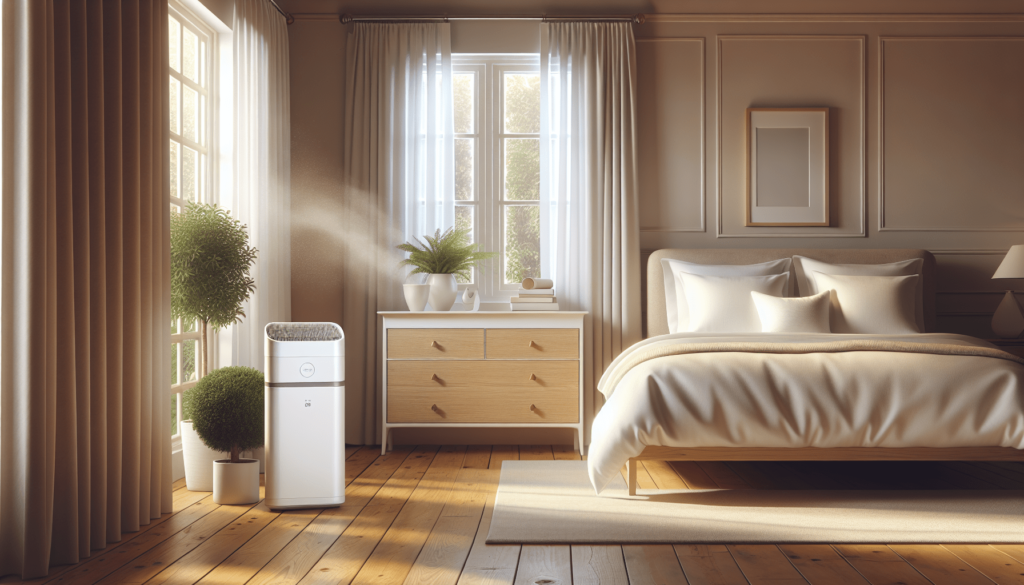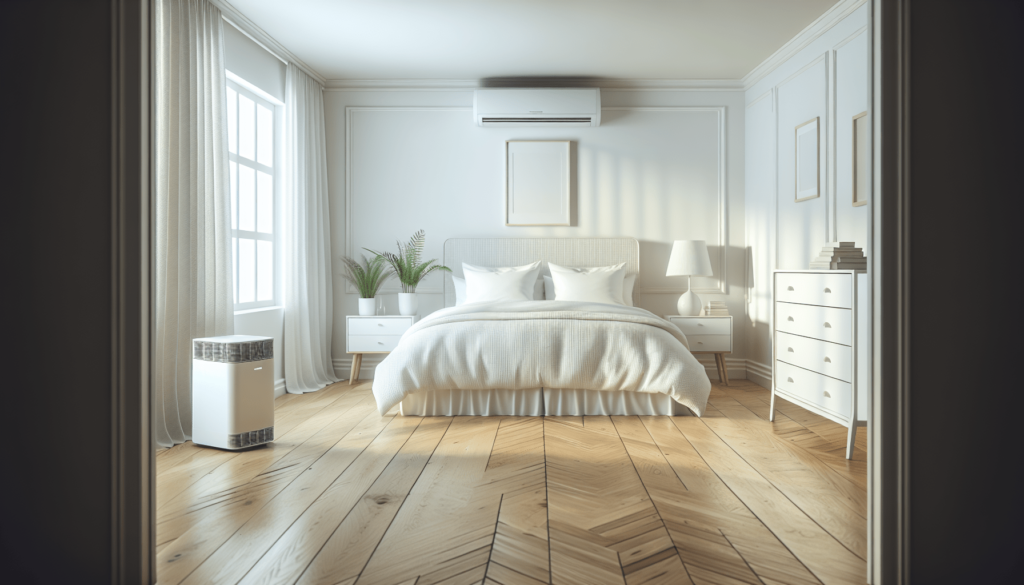Creating a hypoallergenic bedroom can significantly improve the quality of your sleep and enhance your overall well-being. In this guide, you will find practical tips to reduce allergens and create a sanctuary that’s free from irritants. From selecting the right bedding materials to maintaining a clean and dust-free space, these simple strategies can transform your bedroom into a restful, hypoallergenic haven. Have you ever woken up with a stuffy nose, itchy eyes, or unexplained fatigue? It might not be insomnia or stress—your bedroom could be the culprit. For those who suffer from allergies or asthma, creating a hypoallergenic bedroom is essential for a good night’s sleep and overall better health. But what exactly does hypoallergenic mean, and how can you transform your room into a sanctuary that promotes not just sleep but also well-being? In this article, you’ll find easy-to-follow tips and tricks to help create a hypoallergenic bedroom.
Understand the Enemy: Common Bedroom Allergens
Before diving into how you can create a hypoallergenic bedroom, it’s crucial to understand what you’re up against. Common allergens in the bedroom may include dust mites, mold, pet dander, and even certain types of fabrics and furniture materials.
Dust Mites
Dust mites are microscopic pests that thrive in warm, humid environments. They often find refuge in bedding, carpets, and upholstered furniture. These little critters feed on dead skin cells and can be a significant trigger for allergies.
Mold
Mold thrives in dark, damp places and can often be found in bathrooms, but it can also spread to your bedroom. Mold spores can easily become airborne, making them a common allergen.
Pet Dander
If you have pets, their dander, or dead skin cells, can be a considerable allergen. Pet hair can also carry other allergens like pollen and dust into your bedroom.
Chemicals and Fragrances
Certain fabrics, cleaning products, and even furniture can off-gas chemicals that contribute to respiratory issues. Synthetic materials can often be the culprit, affecting your overall air quality.
Bed and Bedding: Your First Line of Defense
Now that you’ve identified your common enemies, let’s start with the most critical aspect of your bedroom: the bed and bedding. Since you spend about a third of your life sleeping, it’s essential to make this area as hypoallergenic as possible.
Mattress Matters
One of the first steps is to invest in a hypoallergenic mattress. Choose materials like latex or memory foam, which are generally resistant to dust mites.
| Mattress Material | Pros | Cons |
|---|---|---|
| Latex | Dust mite resistant, hypoallergenic | Can be expensive |
| Memory Foam | Resistant to allergens | May off-gas chemicals initially |
| Innerspring | Affordable, widely available | Not naturally hypoallergenic, may harbor dust mites |
Additionally, using a mattress cover that is designed to be allergen-proof adds a layer of protection.
Pillow Talk
Your choice of pillows can also make a significant difference. Feather and down pillows are notorious for harboring dust mites. Instead, opt for synthetic or hypoallergenic materials. Memory foam or latex pillows are excellent choices.
Bedding Basics
Choosing the right bedding can also be crucial in minimizing allergens. Select tightly woven, hypoallergenic sheets and pillowcases. Cotton and silk are excellent natural materials that are less likely to harbor allergens.

Flooring and Carpets: Underfoot Concerns
Your choice of flooring can significantly impact your bedroom’s allergen levels. Carpets can trap dust, pet dander, and other allergens, making them a less desirable option for a hypoallergenic bedroom.
Opt for Hard Flooring
Hardwood, laminate, or tile floors are far easier to clean and do not trap allergens. If you prefer a softer feel, use washable area rugs instead of wall-to-wall carpeting.
Carpet Care
If you must have carpet, make sure it’s low pile rather than high pile, which can trap more allergens. Regular cleaning is also crucial. Use a vacuum with a HEPA filter to capture and contain the allergens properly.
Air Quality: Breathe Easy
Clean air is fundamental to creating a hypoallergenic bedroom. Managing indoor air quality can dramatically reduce allergy symptoms and improve your overall health.
Air Purifiers
Consider adding an air purifier with a HEPA filter to your bedroom. These devices are effective at capturing airborne particles like dust, pet dander, and pollen.
Maintain Humidity Levels
Dust mites and mold thrive in humid conditions. Keep your bedroom’s humidity between 30-50% using a dehumidifier if necessary. You can measure the humidity with a hygrometer for accurate control.
Ventilation
Good ventilation is key to reducing indoor allergens. Open windows when possible, but not during high pollen seasons. If you’re using a fan, make sure it’s clean, and consider one with a built-in air purifying function.

Cleaning Habits: Consistency is Key
Maintaining a regular cleaning routine can significantly reduce the allergen levels in your bedroom. Small but consistent efforts can make a big difference.
Vacuuming and Dusting
Vacuum your flooring, including any rugs, at least once a week using a vacuum with a HEPA filter. Don’t forget to dust surfaces with a damp cloth to avoid spreading the allergens through the air. Pay extra attention to often-overlooked areas such as ceiling fans, window sills, and baseboards.
Wash Bedding Regularly
Wash your sheets, pillowcases, and mattress covers in hot water (at least 130°F) weekly to kill dust mites. For added protection, you can dry them on high heat as well.
Declutter
A clutter-free room means fewer surfaces for allergens to settle. Keep your bedroom as minimalistic as possible, storing non-essential items in closed containers or other rooms.
Window Treatments: Clear View
Your choice of window treatments can also play a role in maintaining a hypoallergenic bedroom. Curtains and blinds can trap dust and allergens, so choose wisely.
Types of Window Treatments
| Window Treatment | Pros | Cons |
|---|---|---|
| Roll-up Shades | Easy to clean, minimal | Limited design options |
| Washable Curtains | Can be laundered regularly | Can trap dust in fabric |
| Blinds | Versatile, easy to clean | May require frequent dusting |
Regular Cleaning
Regardless of your window treatment choices, make sure they are easy to clean. Wash curtains monthly and dust blinds and shades weekly.
Furniture: Choose Wisely
The type and amount of furniture you have can impact the allergen levels in your bedroom. Upholstered furniture can harbor dust mites, while certain materials can off-gas chemicals.
Opt for Hard Surfaces
Whenever possible, choose furnishings made of wood, metal, or other non-porous materials. These are easier to clean and don’t harbor allergens. If you prefer upholstered furniture, look for pieces with removable, washable covers.
Minimalist Approach
The less furniture you have, the fewer places for allergens to hide. Keep your bedroom as minimal as possible without sacrificing comfort or functionality.
Pets in the Bedroom: Paw-sitive Practices
While your furry friends bring a lot of joy, they can also bring plenty of allergens. Implementing a few best practices can help mitigate their impact.
Pet-Free Zone
The most effective method is to keep pets out of the bedroom entirely. This might be easier said than done, but it can significantly reduce allergens.
Regular Grooming
Keep your pets well-groomed. Regular brushing and bathing can lessen the amount of dander and hair they shed.
Clean Pet Bedding
If your pets have their own beds, ensure these are also cleaned regularly. Opt for pet bedding that is easily washable.
Additional Tips and Tools
Sometimes, it’s the small, often overlooked practices that can make a big difference in maintaining a hypoallergenic environment.
Hypoallergenic Paints
If you’re considering a bedroom makeover, opt for hypoallergenic paints that are low in volatile organic compounds (VOCs). These paints emit fewer chemicals, contributing to better air quality.
Non-Toxic Cleaning Supplies
Make the switch to non-toxic, eco-friendly cleaning supplies. These can be just as effective as conventional products without adding pollutants to your bedroom environment.
Regular Inspections
Conduct regular inspections of your bedroom for signs of mold or other issues. Addressing problems promptly can prevent them from worsening and maintain a healthier space.
HEPA Filters
Use HEPA filters not just in your vacuum or air purifier, but also consider them for your HVAC system. They can remove a significant amount of airborne allergens, contributing to a cleaner environment.
Seasonal Adjustments
Remember that allergen levels can fluctuate with the seasons. For example, during high pollen periods, keep windows closed and rely more on air purifiers and HVAC systems. Similarly, monitor indoor humidity levels more closely during wet seasons to prevent mold growth.
Conclusion: Your Path to Better Sleep
By taking proactive steps to create a hypoallergenic bedroom, you’re investing in both your quality of sleep and overall well-being. From selecting the right mattress and bedding to maintaining a regular cleaning routine and monitoring air quality, each action brings you closer to a space where you can truly rest and rejuvenate. Remember, consistency is key. Make these practices part of your daily or weekly routine, and you’ll soon notice a significant difference in how you feel. Sweet dreams!
